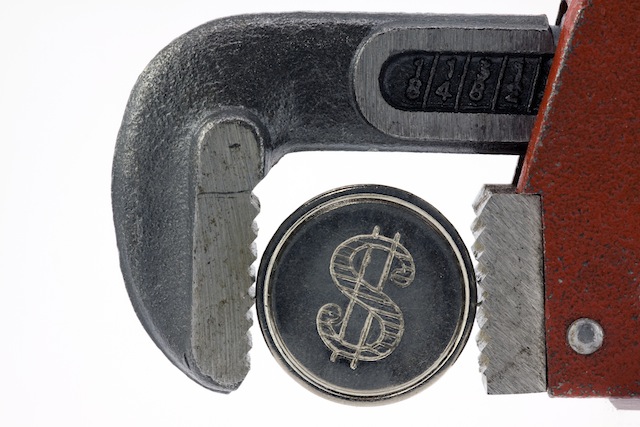One forecast about 2015 that’s very easy to make is businesses with high costs are in for a tough time.
As competition steps up, global forces puts pressure on prices and technological change allows new competitors into marketplaces, the companies that aren’t flexible and keeping an eye on where they are spending money are going to find 2015 will not be a happy year.
For the tech industry the predictions for next year are easy – there will be more security beaches, governments will want more powers to access our data while proving they can’t be trusted with what they already have, a new hot social media network will appear, well known brands will collapse, the net will get faster, more devices will be connected to Internet of Things and prices will continue to fall.
It’s the falling prices that will be what defines business in 2015 as we enter deflationary times; not the economists’ nightmare of prices falling in the face of collapsed demand – although that’s not out of the question – but in the more positive sense of business inputs being cheaper.
Things are going to get cheaper
A few weeks ago I wrote of futurist and academic Andrew McAfee speaking about the accelerated rate of change in business at the Gartner Gold Coast Conference. One of the immediate effects of that changing world McAfee describes is that a lot of thing are going to get cheaper.
Part of this is driven by newer cheaper sources of energy and labour, other driving factors are increased automation in fields where wages have historically been the biggest cost and manufacturing processes are putting pressure on prices for most goods. The commodities prices collapse may also be a key factor in 2015.
For some industries, such as the IT industry, falling prices aren’t a new concept. Any computer superstore or local PC repairer who holds inventory gets a nasty reminder of the sector’s economics every time they do a stocktake. However many businesses operate on the assumption prices will always rise overtime, a not unfair assumption given the inflation we’ve seen over the last fifty years.
Getting costs down
With falling prices, it means businesses have to be more aggressive in cutting costs; whether it’s telephone or power bills through to professional services or banking fees, the onus is now on managers to squeeze as much value for the dollar as they can.
In the technology field the targets are obvious; are your old computer preventing you from using new software? Do cloud services offer a better deal than your old server based systems? Are your service providers charging too much?
For the wider business looking at how newer technologies affect your workflow could well prove rewarding, it may well there’s whole range of areas your company can become more efficient through adopting new systems.
A good candidate for slashing costs and improving flexibility is transport where too many companies are still paying Cabcharge’s overpriced fees when apps like Ingogo or Uber are cheaper and better. Why have company vehicles when car sharing services like GoGet can offer more value. Do you still need an expensive Yellow Pages listing when a free Google My Business entry will get you in front of more potential customers, particularly on the all important mobile platforms?
Then there’s the whole outsourcing question where it’s becoming easier to hire knowledge workers on an as needed basis through the various online platforms like O-Desk and Freelancer.
Over the break, it’s worthwhile reviewing your operations and seeing where you can use technology to cut costs and become more flexible in face of a rapidly changing marketplace. One prediction is certain; those with bloated costs and inflexible management are in for a tough 2015.

Leave a Reply